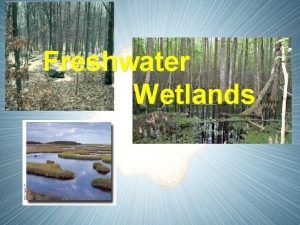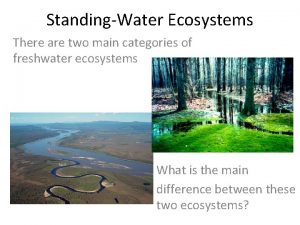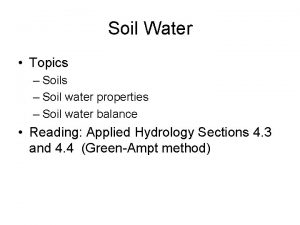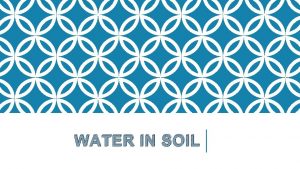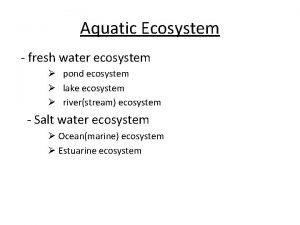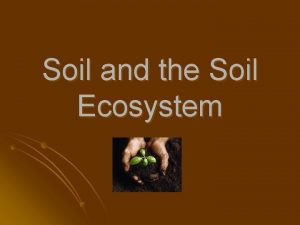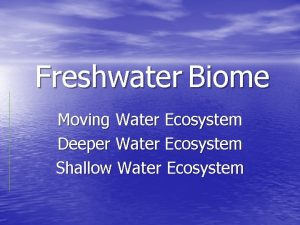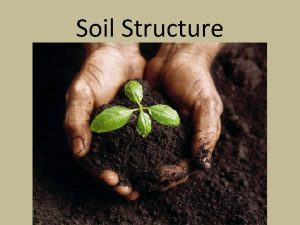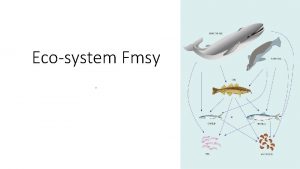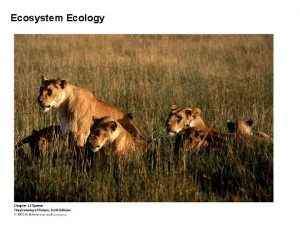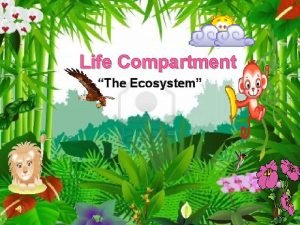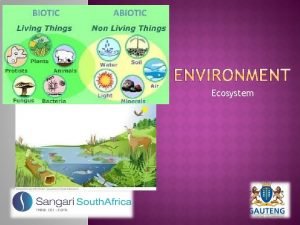Soil for Water SOIL TALK WORKSHOP SERIES ECOSYSTEM









![REST [The most misunderstood tool] Must understand the Brittleness Scale Concept Tendencies in brittle REST [The most misunderstood tool] Must understand the Brittleness Scale Concept Tendencies in brittle](https://slidetodoc.com/presentation_image_h2/3a63d469b7d2d855a664d4d057c6f6c6/image-10.jpg)





- Slides: 15

Soil for Water SOIL TALK WORKSHOP SERIES ECOSYSTEM TOOLS & MONITORING

Brief Review of Key Principles v. Nature functions in whole systems v. Ecosystem is dynamic v. The Concept of the Brittleness Scale v. Uplands with brittleness tendencies evolved with grazing animals v. Riparian health requires protection to minimize destructive disturbances

ALDO LEOPOLD The Father Of Wildlife Management “A land ethic, then, reflects the existence of an ecological conscience, and this in turn reflects A conviction of individual responsibility for the health of land”


TOOLS FOR MANAGING THE ECOSYSTEM Leopold’s Tools: Axe Cow HMI’s tools: Technology Rest Plow Fire Gun Fire Animals and Living Organisms [ TOOLS USED BY NATURE ]

The Tool of Fire Tendencies in Brittle Environments: Expose soil surface and produce bare ground which reduces effectiveness of the water cycle; releases carbon into atmosphere. Careful management required following a fire.

Animals & Living Organisms When managed properly; regenerative grazing provides: §Improved forage diversity with increased root mass; §Speeds up nutrient cycling; §Increased soil organic matter; §Increased water holding capacity §Increased solar energy flow

Impact from Animals Properly managed, animal impact provides: §Breaking down of plant material as litter to cover the soil; §Digesting plant material & returning nutrients to soil; §Break up any capping on the soil surface; §Invigorate plant growth; §Contributes to shifting of the biological community toward improved function.

Living Organisms Tendencies: §Provide relative stability §Reduce pest problems §More diversity above ground reflects more diversity below ground = more water holding capacity
![REST The most misunderstood tool Must understand the Brittleness Scale Concept Tendencies in brittle REST [The most misunderstood tool] Must understand the Brittleness Scale Concept Tendencies in brittle](https://slidetodoc.com/presentation_image_h2/3a63d469b7d2d855a664d4d057c6f6c6/image-10.jpg)
REST [The most misunderstood tool] Must understand the Brittleness Scale Concept Tendencies in brittle type environments: § Decreases biodiversity § Could increase bare ground § Could decreases soil organic matter = less water holding capacity

Technology Fencing Water systems Gun & Axe Plow / re-seeding Trucks & trailers GPS Google Earth Permaculture Earth works Potential Tendencies: • Cost money • May Disrupt ecosystem processes • May decrease biodiversity • May degrade ecological function = less water holding capacity

Technology • Key Principles: • Keep soil covered • Maintain as much diversity as possible • Maintain Living plants as long as possible • Stop erosion • Monitor soil organic matter

Principles of Monitoring

Principles of Monitoring A. B. C. D. E. F. Create a future landscape description Select your monitoring method Select sites on your land mark them Follow monitoring instructions Collect and save all your monitoring forms Change and adapt your management based on monitoring data.

Monitor Soil Organic Matter 1) Select a Soil Testing Lab 2) Follow their instructions on collecting a soil sample 3) Send in; save your results 4) Conduct each year; monitor your trend
 Freshwater wetlands purify water by
Freshwater wetlands purify water by Water and water and water water
Water and water and water water Talk read talk write template
Talk read talk write template Amateurs discuss tactics professionals discuss logistics
Amateurs discuss tactics professionals discuss logistics Problem talk vs solution talk
Problem talk vs solution talk Section 3 water pollution
Section 3 water pollution Standing water ecosystem
Standing water ecosystem Living soil vs dead soil
Living soil vs dead soil What are the four spheres of the earth
What are the four spheres of the earth Maclaurin series vs taylor series
Maclaurin series vs taylor series Balmer series lyman series
Balmer series lyman series Taylor series of composite functions
Taylor series of composite functions Taylor series lesson
Taylor series lesson Ibm p series
Ibm p series General
General Series aiding and series opposing
Series aiding and series opposing
